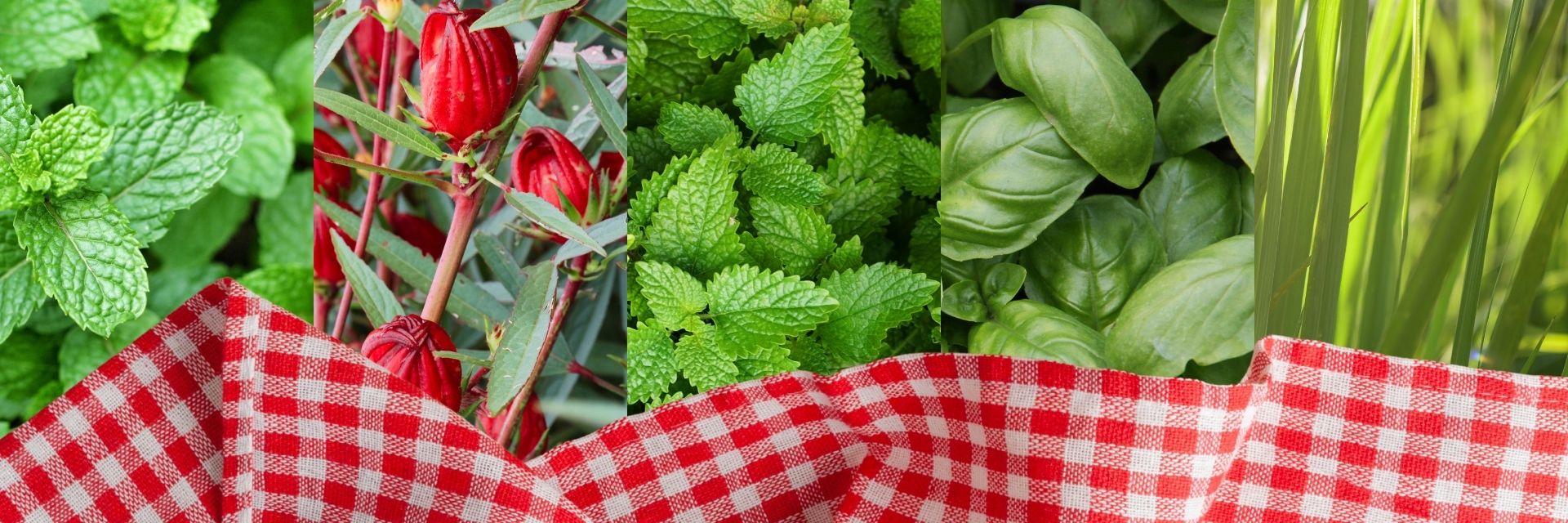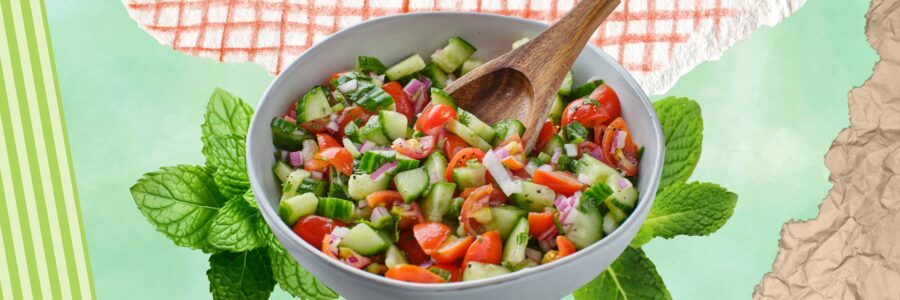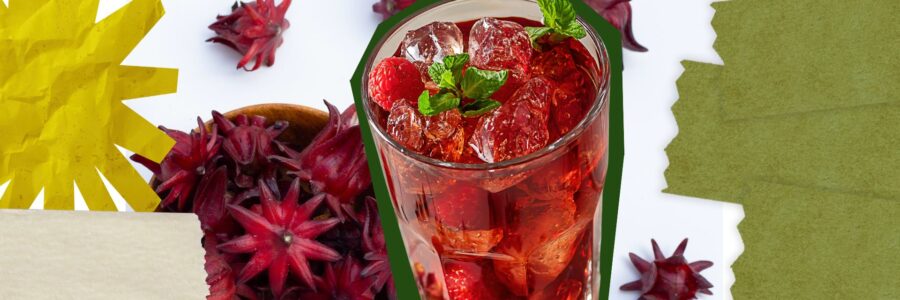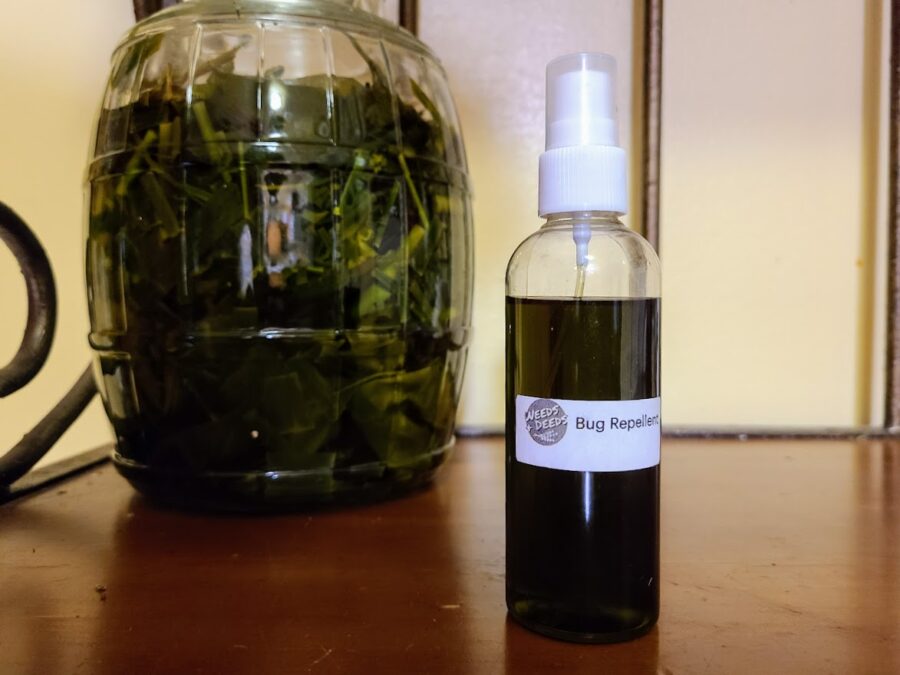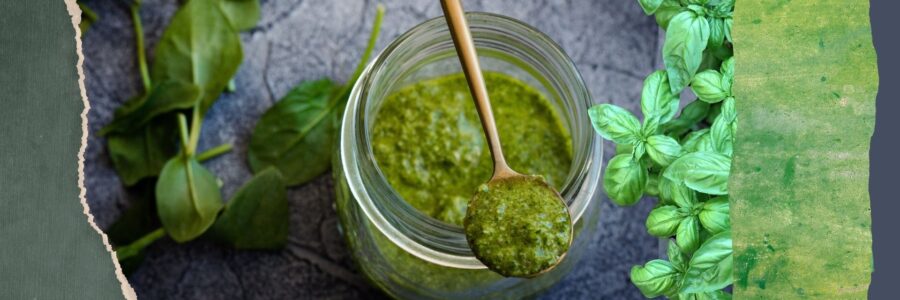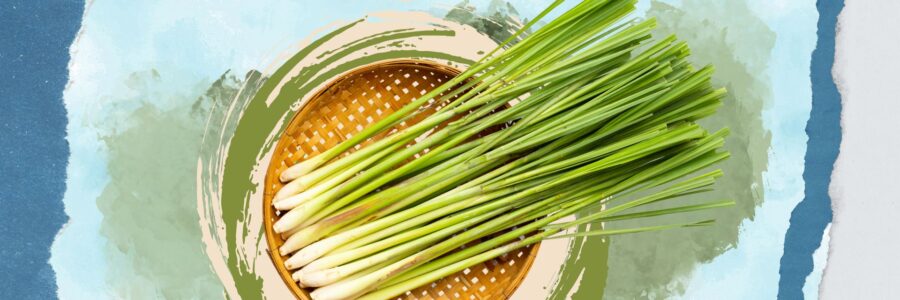I. Mint
Mint contains menthol, which triggers cold-sensitive receptors in your skin, creating a cooling sensation. You can take advantage of this in a few ways:
- Adding a few drops of mint oil to liquid bathing soap.
- Creating a cooling mist that you can spray yourself with while outdoors.
- Adding mint to a homemade bug spray, like our Beautyberry Insect Repellent Cream or Herbal Insect Repellent Spray.
Mint is also energizing to the body internally. A few ways you can use it to stay cool during the summer months include:
- Iced tea
- Infused water
- Smoothies
- Ice cream
- Salads
Mint Iced Tea
II. Roselle Hibiscus
This herb has a tart, astringent flavor that’s thirst-quenching. It also has a high electrolyte content, which helps with hydration. The calyces contain significant potassium (ranging from 1415 ± 7.07–2630 ± 127.28 mg in various parts of the plant), calcium (values ranging from 245 ± 7.07 to 2375 ± 35.36 mg), and magnesium (ranging from 365 ± 7.07 to 555 ± 21.2 mg). They are even said to surpass kale on calcium content!
Hibiscus also calms the nervous system and can help dissipate excess heat in the body, easing inflammation and fluid retention. Options for enjoying hibiscus:
- Iced tea
- Freezing it into popsicles
- Spiced or fermented like Zobo of Jamaican Sorrel
- Add to coconut water for a higher electrolyte drink
Fermented Roselle Hibiscus Tea (Zobo Style)
Roselle Hibiscus Iced Tea
Fermented Roselle
III. Lemon Balm
This plant ally is in the mint family and thrives in sun to partial shade. It prefers sandy soils, which means it can grow well in our pine flatwoods. It can be used in much the same way as mint. Its flavor offers a more citrusy option. It is well known for its ability to help calm digestive issues, soothe the nervous system, and combat viral conditions that may be worsened in the summer months.
Lemon balm also has a calming effect on the nervous system. Here are some ideas for enjoying lemon balm:
- Sun tea
- Standard lemonade
- Chopped in green salads for zest
- Added to natural insect repellents (featured in our recipe)
- Infuse heavy cream and make crème brûlée
- Balms for irritated skin
Lemon Balm Sun Tea
Herbal Insect Repellent
IV. Basil
We recently attended the Fall kick-off event where the Leon County Extension office provided free Genovese Basil seedlings. If you missed the event, you can still stop by the library and get free basil seeds at the circulation desk using your library card.
Basil is a summer favorite in north Florida because it is a heat-tolerant plant ally that thrives in full sun. Though it is easy to grow, it prefers not to have excessive moisture, so it thrives in containers or beds. This means you do not need a huge space to enjoy fresh plants. It is also sold as a live plant at local grocery stores in the produce section.
It contains compounds like eugenol and cineole, which are thought to aid with digestion, reduce bloating, soothe gastrointestinal discomfort, and promote better absorption of nutrients. It also has many antioxidant and anti-inflammatory properties which can help your body deal with stress and cell damage. Z
Basil shines in pesto recipes during the summer months. Check out our recipe.
You can substitute meadow garlic with regular garlic if you do not have access to this native alternative.
Meadow Garlic and Basil Pesto
V. Lemongrass
This plant ally is another insect-repelling star and is featured in our recipe. It is easy to grow and requires warmth, full sunlight, and plenty of moisture. This is a beautiful match for late summer in North Florida.
You can also access fresh stalks of lemongrass at local Asian markets. Sometimes you can even root these in a glass of water (in about 2 weeks).
Lemongrass is known for its calming, feel-good benefits and tastes great. You can use lemongrass in teas and as aromatherapy (the essential oil) to help ease stress, support sleep, and promote relaxation. In baths, lemongrass can act as a powerful remedy for alleviating sore muscles.
Other uses for lemongrass:
- Cold soups
- Steam tents

